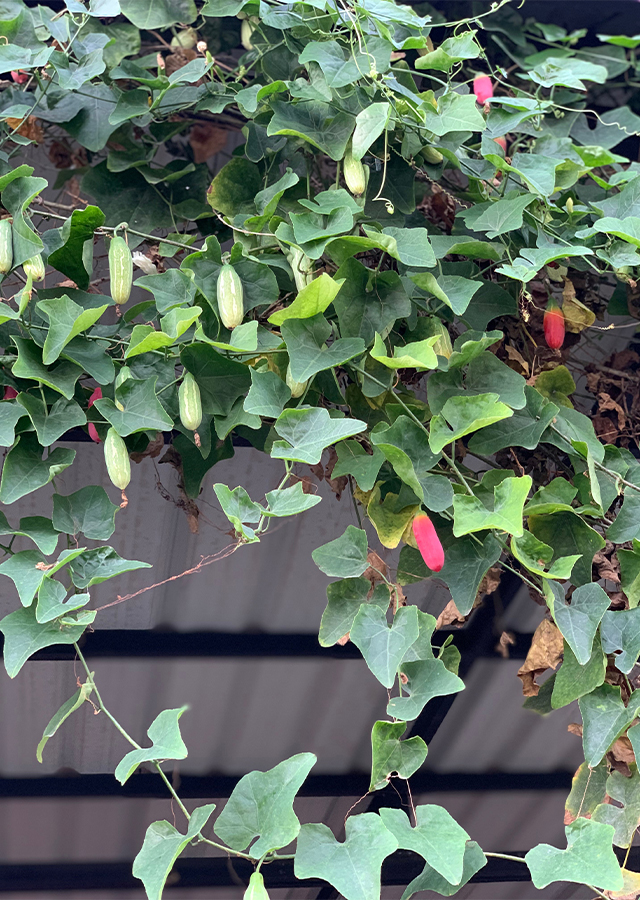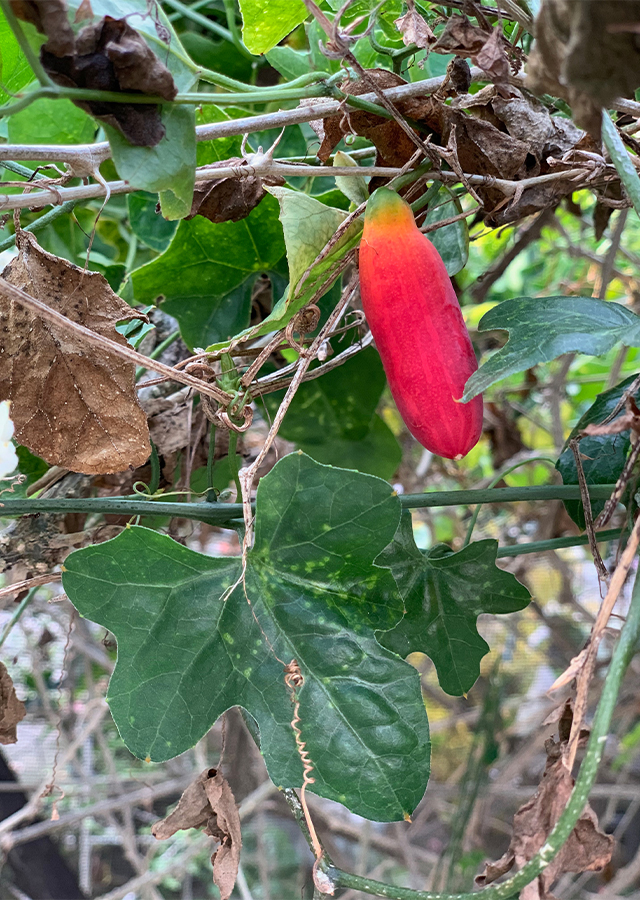Traditional Herbs from Coccinia grandis
stabilize_blood_pressure
- Prepare fresh mouse cucumbers.
- Wash thoroughly with running water.
- Consume 7 cucumbers in the morning.
What is Coccinia grandis Looks like??



Parts of Coccinia grandis that could be used
- Leaves
- Fruit
- Roots
- Twigs
Coccinia grandis Distribution
Initially, mouse or papasan cucumbers were found in Africa, then spread widely to Southeast Asia. This plant is widely used in Asian cuisine as a vegetable, both consumed fresh and processed. Apart from that, mouse cucumber is also widely used in traditional medicine.Agroecology of Coccinia grandis
Suitable to grow at temperatures of 21-27 °C, does not tolerate high rainfall. Grows well in warm and humid tropical areas at an altitude of 0-1,100 m above sea level. Rainfall is around >60 mm/month. Able to grow in most types of soil, prefers humus-rich sandy soil and sun-protected conditions, but does not like clay soil.
Morphology of Coccinia grandis
- The stems are elongated and tendrils.
- The leaves are arranged alternately, fingered, the blades are wide longitudinally or almost rounded, 3-12 cm long, and 3-15 cm wide. The upper surface of the leaves is hairless, the lower surface is hairy.
- Flowers appears in the leaf axils, stem length 1-5 cm, crown greenish white, bell-shaped with 5 split ends, round shape.
- Fruit oval, length 4-6 cm, color green\u00a0with white stripes when young, red when old.
- Seeds brown, edges thickened, 6-7 mm long.
Cultivation of Coccinia grandis
- Propagation of this plant is generally vegetative, namely by stem cuttings 10-15 cm with a diameter of 0.5 cm.
- Propagation by seed is rarely done because it is a dioecius plant with 50% unproductive male flowers.
Coccinia grandis, more details :
Chemical Content of Coccinia grandisPhytosterols, flavonoids, terpenoids, coccinosides, phenols, tannins, alkaloids, glycosides, cucurbitacin B, taraxerone, lupeol, saponins, cryptoxanthin.
Benefits of Coccinia grandis
Overcoming inflammation and antihistaminic potential, lowering high blood pressure, treating fever, diarrhea, smallpox and diabetes, has anti-inflammatory activity, lowers blood sugar, anthelmintic, relieves rheumatism, treats cataracts.
Simplisia of Coccinia grandis
- Choose fresh cucumber leaves. Clean them of any dirt that sticks to them. Wash them, then drain them.
- Cut the leaves and place them on a container then dry them in the sun and cover with a thin dark cloth.
- After drying, grind them and put it in clean plastic that is tightly closed or airtight.
Another Facts for Coccinia grandis :
Synonym of Coccinia grandisBryonia acerifolia� D.Dietr.. Bryonia alceifolia� Willd.. Bryonia barbata� Buch.-Ham. ex Cogn.
Habitus of Coccinia grandis
Creepers. Annual climbing plant, reaching 20-30 m in length
Habitat of Coccinia grandis
- Forest
- Bushland
- Grassland
No comments:
Post a Comment